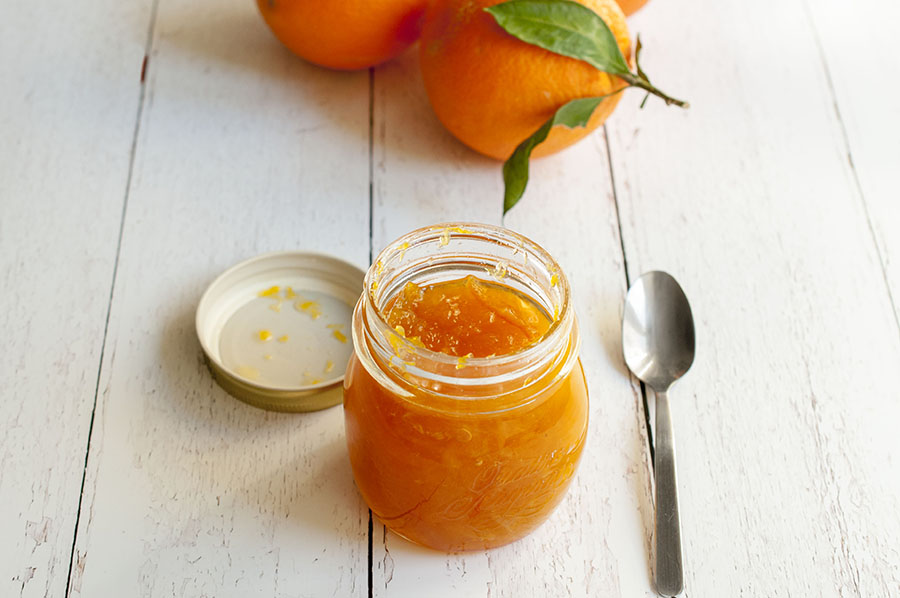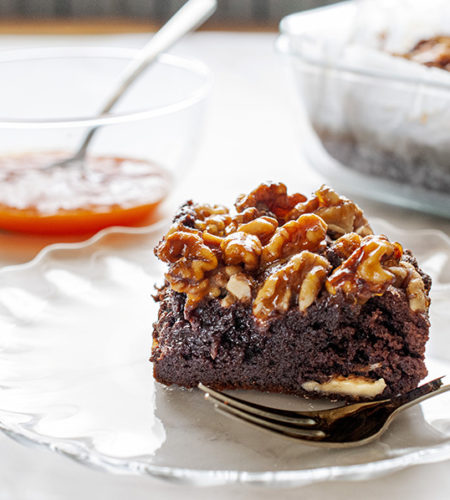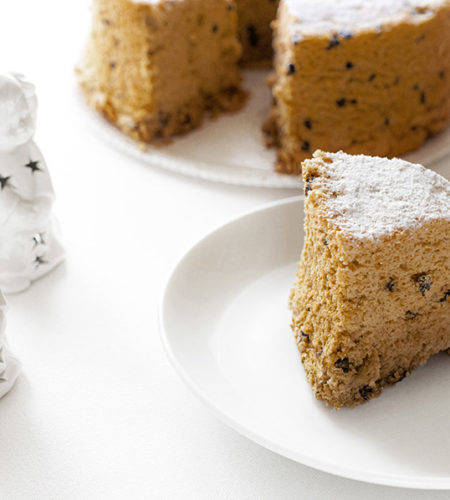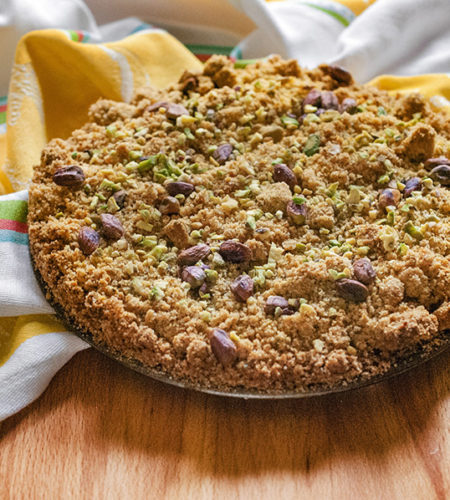Marmalade is a classic of the English breakfast. In the 1982 European Directive, it was officially clarified that the term refers only to citrus-based products.
Although some historians attribute its discovery to the Scotsman James Keiller in 1500 and other historians to the cooks of the Spanish Catherine of Aragon, the first written testimony dates back to 1677 in a book by the Englishman Eliza Cholmondeley. This forerunner to marmalade was practically solid, but in the 1714 book “A Collection of above Three Hundred Receipts,” the recipe is already very similar to the current one with sugar, orange pulp and zest, and lemon juice, which activates the pectin.
Every year I prepare a lot of candied oranges, so I have a lot of pulp left over. With this, I prepare a delicious marmalade that’s thick and sweet, with a very slight bitter aftertaste.
Orange Marmalade
- Preparation time: 2 days
- For 4 jars
- Difficulty: Average difficult recipe
- Ingredients
- 1.5 kg of Nevel orange pulp
- Zest of 2 organic oranges
- 800 g of sugar
- The juice of 1/2 lemon
- Instructions
- Cut the orange peels julienne.
- In a saucepan with a little water, boil the peels for two to three minutes. Drain and repeat.
Place them in a nice, large pan together with the sugar and the cut pulp of the oranges. Leave everything to macerate for an hour. - Place the pan on the heat and bring to the boil. Let everything boil for about three minutes, then turn off the heat and let the mixture cool.
- Pour the mixture into a ceramic or glass bowl, cover with baking paper, and leave to rest in the refrigerator until the next day.
- The next day, the jars and caps must be sterilized.
- Place them in the oven, set the temperature to 250° F, and leave them there for an hour. Turn off the oven and start cooking the marmalade.
- Filter the syrup through a sieve into a pan and bring it to the boil at 221°F. It will take about fifteen minutes. Then, add the pieces of oranges present in the strainer and continue cooking for another fifteen minutes, or until the temperature reaches 221°F.
- To check if the marmalade is ready without the presence of the thermometer, take a teaspoon of the mixture and drop it onto a saucer, blow on it, and try to turn the saucer over. If the mixture slides too quickly, the marmalade must cook further. If it slides slowly, the marmalade is ready.
- Pour the still-hot marmalade into the sterilized jars. Close the jars with the cap, turn them upside down, and let them cool completely.
Tips to ensure the success of the dish:
- Boiling the orange peels helps remove the bitterness.
- I recommend using a ceramic bowl and placing it in the refrigerator only when the mixture is at room temperature.
- I always try to sterilize the jars, even after. I do it in boiling water. You put the jars in a pot, fill the pot with water (that must exceed 1 31⁄32 in the cap of the jars), and then put the pot over the fire. As soon as it boils, it takes about twenty minutes for the 8 oz jar to be ready and thirty minutes for the 20 oz jars. All the jars should be left inside the water until it is completely cooled. The jars should go under a vacuum as soon as the water cools. Jars that have not been vacuumed must be consumed immediately and cannot be placed in the pantry.




